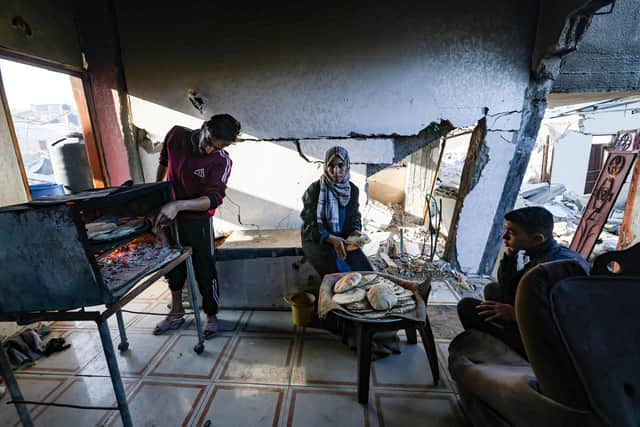Israel-Hamas: ‘Unprecedented’ levels of food shortage in Gaza as 93 per cent of population deemed to be facing crisis level of hunger
An unprecedented 93 per cent of the population in Gaza is facing crisis levels of hunger, with insufficient food and high levels of malnutrition, according to a report from the World Health Organisation (WHO).
The WHO said at least one in four households were facing “catastrophic conditions”, experiencing an extreme lack of food and starvation and having resorted to selling off their possessions and other extreme measures to afford a simple meal.
Advertisement
Hide AdAdvertisement
Hide AdMore than 20,000 people are now believed to have died in the territory since Israel began its retaliatory assault on Gaza following the October 7 Hamas attacks.


On recent missions to north Gaza, WHO staff said every single person they spoke to in Gaza was hungry. Wherever they went, including hospitals and emergency wards, people asked them for food.
“We move around Gaza delivering medical supplies and people rush to our trucks hoping it’s food,” one staff member said, calling it “an indicator of the desperation”.
The organisation said Gaza was experiencing soaring rates of infectious diseases, adding that conditions make the spread of infectious diseases “inevitable”.
More than 1.9 million people have been displaced from their homes, of whom over 1.4 million are staying in overcrowded shelters. On average, there is only one shower for every 4,500 people and one toilet for every 220. Clean water remains scarce and there are rising levels of outdoor defecation.
WHO said more than 100,000 cases of diarrhoea have been reported since mid-October. Half of these are among young children under the age of five years and number 25 times the level reported before the conflict.
Meanwhile, more than 150,000 cases of upper respiratory infection, and numerous cases of meningitis, skin rashes, scabies, lice and chickenpox have been reported. Hepatitis is also suspected, as many people present with signs of jaundice.
A spokesman said: “The people of Gaza, who have already suffered enough, now face death from starvation and diseases that could be easily treated with a functioning health system. This must stop. Food and other aid must flow in far greater amounts. WHO reiterates its call for an immediate humanitarian ceasefire.”
Advertisement
Hide AdAdvertisement
Hide AdGaza’s Health Ministry said on Friday that it had documented 20,057 deaths in the fighting. It does not differentiate between combatant and civilian deaths.
Israel has carried out thousands of air strikes as well as a fierce ground offensive in what it says is a campaign to destroy Hamas’ military capabilities.
It blames Hamas for the high civilian death toll, citing the group’s use of crowded residential areas for military purposes.
Israeli officials say the army has killed some 7,000 Hamas militants, but it has not presented any evidence to back up the claim.
Comments
Want to join the conversation? Please or to comment on this article.
